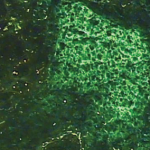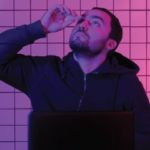Sjögren’s syndrome is primarily characterized by serious and often disabling dry eyes and dry mouth due to immune infiltration of target organs.
The 2015 XIII International Sjögren’s Symposium in Bergen, Norway, highlighted the great advances since the first SS symposium was held in 1986 with a handful of rheumatologists, ophthalmologists and oral medicine specialists in attendance. To put the timing of the initial meeting in perspective, all attendees at the 1986 symposium were “hosed down” several times a day due to the radioactive fallout from the then-recent Chernobyl meltdown.
Participants at the first symposium included Roland Jonssen, Troy Daniels, John Greenspan, Claudio Vitali and the author. Many were also at the most recent SS meeting in Bergen to pass the torch to a new generation of researchers. We also took time at the recent meeting to note the absence of many organizers of the original meeting, such as Norman Talal, Peter Oxholme, Jan Waldenstrom and even Henrik Sjögren. Actually, Sjögren was ill on the day of the initial meeting, so a number of us drove over to his home to give him our greetings.
Thus, the recent SS symposium in Bergen provides an appropriate prompt for us to look at where we are currently in terms of our understanding of pathogenesis and treatment.
A review of the scientific presentations and the full abstracts are referenced in a recent article by the author in WebMD.
So where are we now, after thousands of articles about innumerable genes and cytokines?
The basic clinical features of Sjögren’s were outlined by Bloch et al in 1956, and we have a couple of medications for topical dryness—topical cyclosporine and oral cevimeline or pilocarpine.1
Rituximab (Rituxan) remains the most widely administered biologic drug for the extraglandular manifestations in U.S. clinical practice and in large cohorts of patients in France, but it did not show significant improvement in a pivotal randomized prospective trial in the U.S., and thus was not even submitted to the FDA.2,3
Why do we have this phenomenal disconnect between clinical practice and FDA approval in the U.S., where rheumatologists must use innovative ICD coding to treat SS patients with a therapy widely used for SS in Europe?4
The simple answer is that few SS patients in the U.S. prospective rituximab trials had extraglandular symptoms and that drug may not need to be used in a “preventive” prospective method, as is done in the treatment of RA. We treat lymphoma when it becomes apparent and not before it is confirmed.


